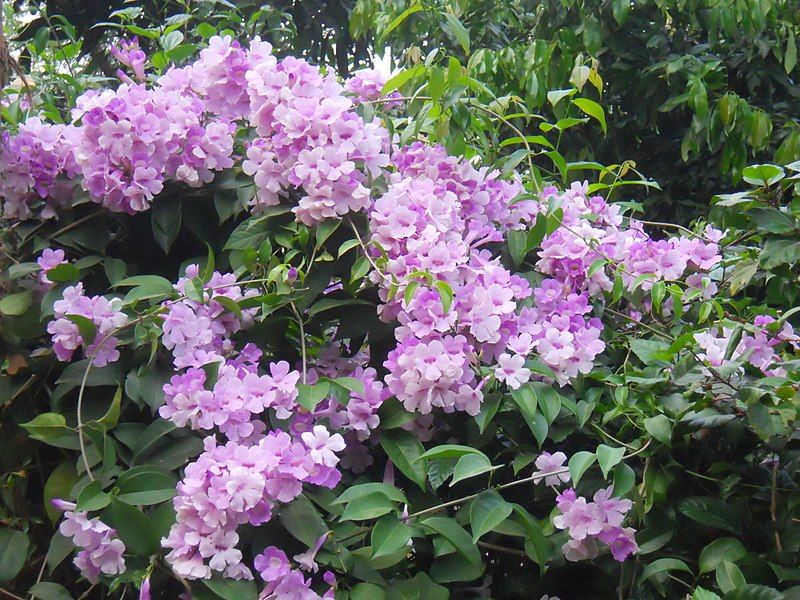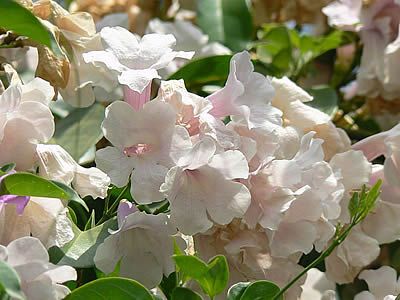The Garlic Vine (Mansoa alliacea) is a small-sized, evergreen climbing plant from the Bignoniaceae family, the same family as the Ipê trees. It features ornamental flowering, in addition to interesting culinary and medicinal qualities. Native to the Amazon rainforest, it is still little known in landscaping but has spread to India, South Africa, Florida (USA), and other tropical climates.
It produces several stems from the root, which intertwine with each other and the support, reaching 2 to 3 meters (about 6.5 to 10 feet) in length. Its leaves are smooth, opposite, glabrous, divided into two also opposite leaflets, elliptical to ovate, acuminate, light green, and shiny, with well-marked veins. When crushed or cut, the plant’s leaves release a garlic odor.
It flowers more than once a year, producing dense, globular inflorescences, formed by trumpet-shaped flowers. The flowers initially bloom in a deep lilac tone, gradually acquiring lighter shades, transitioning through pink and even white. This characteristic is reminiscent of the Glory Bush (Tibouchina mutabilis), as all three colors can be observed on the plant simultaneously. The flowering lasts about a week.
In contrast to other climbing plants from the Bignoniaceae family, the Garlic Vine, although vigorous and rustic, has moderate growth and does not reach as large proportions as the Pink Trumpet Vine (Podranea ricasoliana) or the Chinese Trumpet (Campsis grandiflora). Therefore, it is an ideal species for adorning lighter, smaller structures such as trellises and little arches, and also for crowning fences and walls. Despite its climbing habit, the Garlic Vine can also be grown as a shrub, with periodic formative pruning. It can be cultivated in pots and planters.

Curiosity: The Garlic Vine is widely reputed as a medicinal plant by the indigenous peoples of the Amazon. Additionally, its leaves are edible and used to season various dishes, imparting a flavor similar to garlic. Its essential oil is also utilized as a perfume fixative, as well as a repellent for insects and bats.
It should be cultivated in full sun or partial shade, in fertile soil enriched with organic matter, and watered regularly. It thrives in tropical heat and humidity but can tolerate subtropical cold, as long as temperatures do not drop below 0°C (32°F) and it is kept away from frost. Pruning should be done after flowering, and it’s important to note that pruning during growth can compromise flowering, as flower buds appear on branches grown in the last season.
Although it tolerates partial shade, it is important for the plant to receive direct sunlight to flourish. Plants grown in excessively shaded areas may display beautiful foliage, but their flowering will be absent or rare. Propagation is through seeds or semi-hardwood cuttings rooted/germinated in a substrate kept moist during summer.


